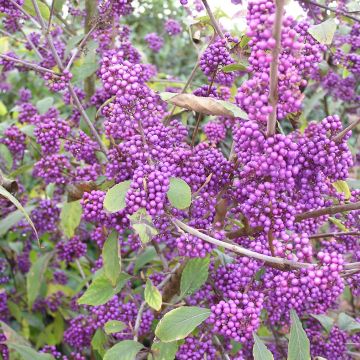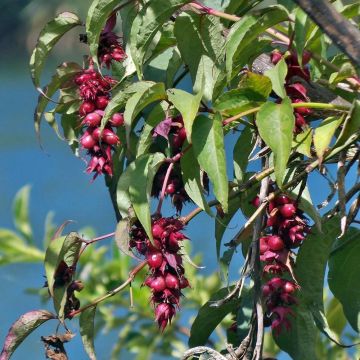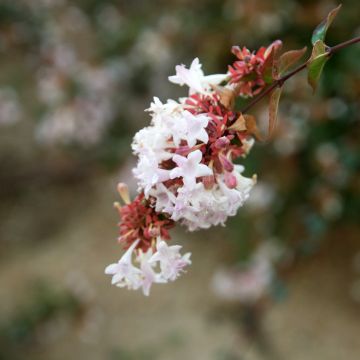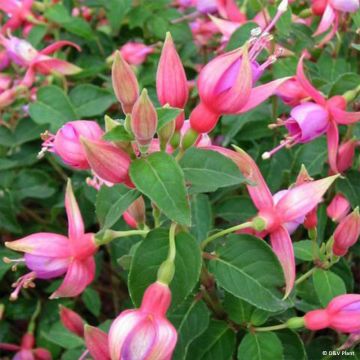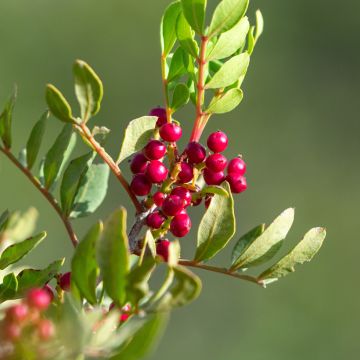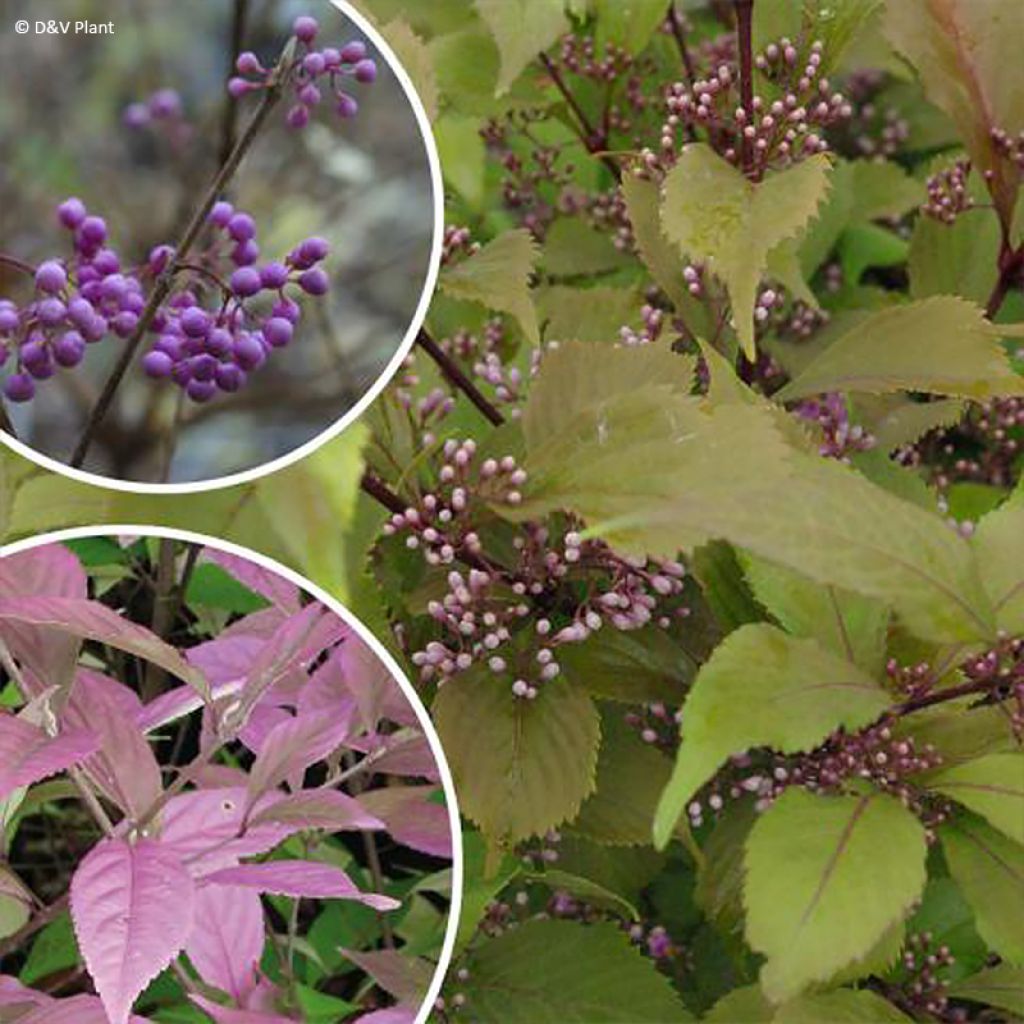

Callicarpa dichotoma Cardinal - Arbuste aux bonbons
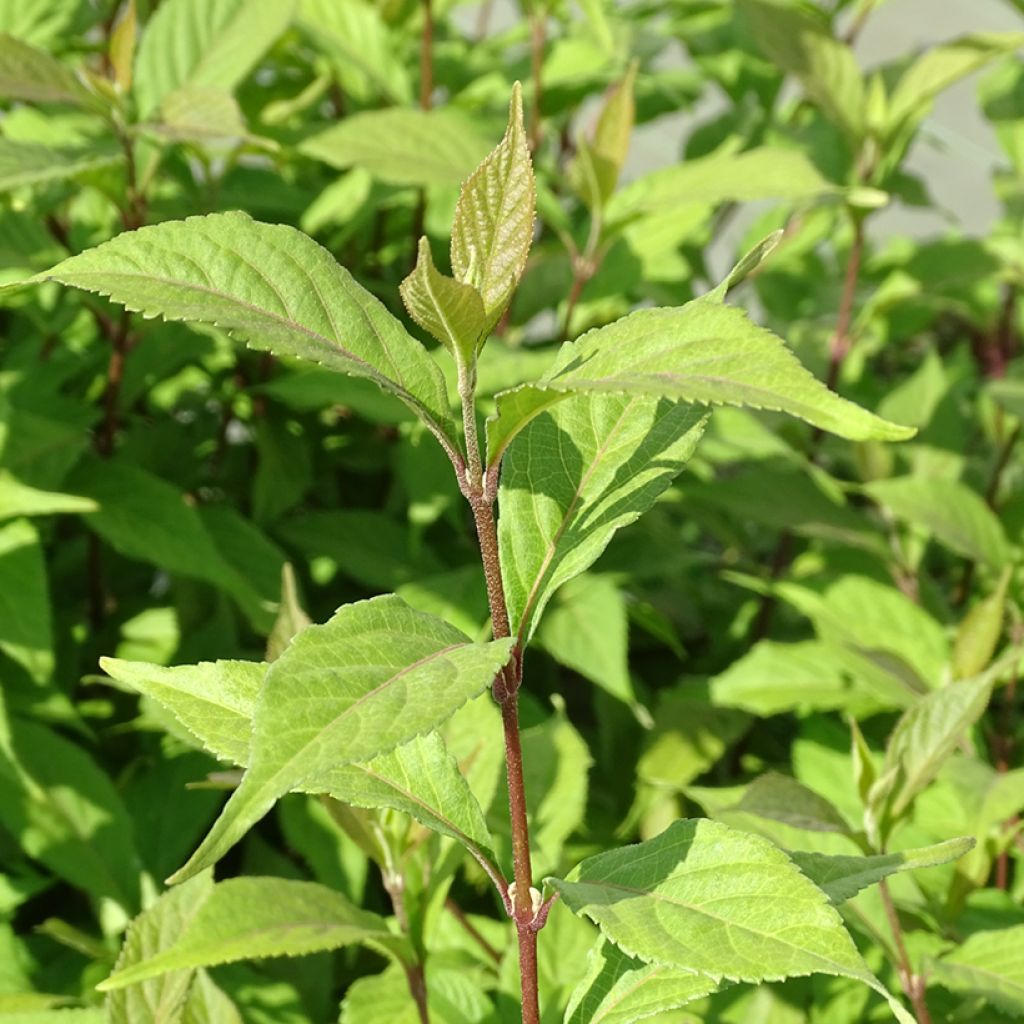

Callicarpa dichotoma Cardinal - Arbuste aux bonbons


Callicarpa dichotoma Cardinal - Arbuste aux bonbons
Callicarpa dichotoma Cardinal
Callicarpa x dichotoma Cardinal
Purple Beautyberry, Early Amethyst
This item cannot be shipped to the selected country
Delivery charge from €5.90
Delivery to Corse prohibited
More information
Schedule delivery date,
and select date in basket
This plant carries a 24 months recovery warranty
More information
We guarantee the quality of our plants for a full growing cycle, and will replace at our expense any plant that fails to recover under normal climatic and planting conditions.
From €5.90 for pickup delivery and €6.90 for home delivery
Express home delivery from €8.90.
Delivery to Corse prohibited: UE law prohibits the import of this plant from mainland France to Corse as part of the fight against Xylella fastidiosa. Please accept our sincere apologies.
More information

Does this plant fit my garden?
Set up your Plantfit profile →
Description
The Callicarpa dichotoma Cardinal is a magnificent cultivar derived from a small bush sometimes called a candy tree or bush because of its small round berries grouped in violet clusters. 'Cardinal' has the same imposing and decorative fruiting, enhanced by its autumn foliage that takes on beautiful shades of pink and mauve.
The Cardinal Callicarpa is a recent horticultural creation derived from the Callicarpa dichotoma, native to Chinese mid-mountain forests. This deciduous bush is traditionally classified as part of the Verbenaceae family, and has now been transferred to the Lamiaceae family, alongside Salvia and Mint. With an upright and bushy habit, 'Cardinal' does not exceed 1.50 m (4 ft 11 in) in height and 1 m (3 ft 4 in) in width at maturity. It produces, in June-July, on the current year's branches, numerous small pale pink flowers with yellow stamens grouped in small clusters. This flowering is followed in September-October by the formation of as many berries, 3.5 to 4 mm (0.1 to 0.2 in) in diameter, of a light and shiny violet, grouped in clusters along the stems. They often remain until the heart of winter. The foliage is composed of entire, ovate-elliptical, veined leaves, with an acidic green colour. They gradually turn pale yellow, pink, and mauve before falling in autumn.
Place the Callicarpa 'Cardinal' in a strategic location to enjoy its colours and its berries that shine in autumn. It is advisable to plant Callicarpa in groups of three to improve pollination and therefore fruit formation. This very hardy and accommodating bush, which requires very little maintenance, looks stunning when highlighted by a carpet of silver baskets or cyclamen. Its autumn foliage will go well with those of the Compact Winged Euonymus or the Abelia Caramel Charm. To accompany it, you can choose other shrubs with decorative berries such as symphorines, a small strawberry tree 'Compacta', a Mahonia, Holly, or Franchet Cotoneaster.
Report an error about the product description
Plant habit
Flowering
Foliage
Botanical data
Callicarpa
x dichotoma
Cardinal
Verbenaceae
Purple Beautyberry, Early Amethyst
Cultivar or hybrid
Other Callicarpa
Planting and care
The Cardinal Callicarpa is an easy-to-grow bush in ordinary, well-cultivated soil, even slightly chalky, but remaining slightly moist in summer. Plant it in a sunny or semi-shaded location. Once mature, it is hardy, but it is advisable to protect it with mulch in the first few years. Prune any branches that have been frost-damaged, they will regrow from the base. Plant in groups of three to allow for pollination and therefore fruiting. Prune this variety quite short in late winter, by shortening the branches by 2/3 of their length.
Planting period
Intended location
Care
-
, onOrder confirmed
Reply from on Promesse de fleurs
Late-flowering shrubs
Haven't found what you were looking for?
Hardiness is the lowest winter temperature a plant can endure without suffering serious damage or even dying. However, hardiness is affected by location (a sheltered area, such as a patio), protection (winter cover) and soil type (hardiness is improved by well-drained soil).

Photo Sharing Terms & Conditions
In order to encourage gardeners to interact and share their experiences, Promesse de fleurs offers various media enabling content to be uploaded onto its Site - in particular via the ‘Photo sharing’ module.
The User agrees to refrain from:
- Posting any content that is illegal, prejudicial, insulting, racist, inciteful to hatred, revisionist, contrary to public decency, that infringes on privacy or on the privacy rights of third parties, in particular the publicity rights of persons and goods, intellectual property rights, or the right to privacy.
- Submitting content on behalf of a third party;
- Impersonate the identity of a third party and/or publish any personal information about a third party;
In general, the User undertakes to refrain from any unethical behaviour.
All Content (in particular text, comments, files, images, photos, videos, creative works, etc.), which may be subject to property or intellectual property rights, image or other private rights, shall remain the property of the User, subject to the limited rights granted by the terms of the licence granted by Promesse de fleurs as stated below. Users are at liberty to publish or not to publish such Content on the Site, notably via the ‘Photo Sharing’ facility, and accept that this Content shall be made public and freely accessible, notably on the Internet.
Users further acknowledge, undertake to have ,and guarantee that they hold all necessary rights and permissions to publish such material on the Site, in particular with regard to the legislation in force pertaining to any privacy, property, intellectual property, image, or contractual rights, or rights of any other nature. By publishing such Content on the Site, Users acknowledge accepting full liability as publishers of the Content within the meaning of the law, and grant Promesse de fleurs, free of charge, an inclusive, worldwide licence for the said Content for the entire duration of its publication, including all reproduction, representation, up/downloading, displaying, performing, transmission, and storage rights.
Users also grant permission for their name to be linked to the Content and accept that this link may not always be made available.
By engaging in posting material, Users consent to their Content becoming automatically accessible on the Internet, in particular on other sites and/or blogs and/or web pages of the Promesse de fleurs site, including in particular social pages and the Promesse de fleurs catalogue.
Users may secure the removal of entrusted content free of charge by issuing a simple request via our contact form.
The flowering period indicated on our website applies to countries and regions located in USDA zone 8 (France, the United Kingdom, Ireland, the Netherlands, etc.)
It will vary according to where you live:
- In zones 9 to 10 (Italy, Spain, Greece, etc.), flowering will occur about 2 to 4 weeks earlier.
- In zones 6 to 7 (Germany, Poland, Slovenia, and lower mountainous regions), flowering will be delayed by 2 to 3 weeks.
- In zone 5 (Central Europe, Scandinavia), blooming will be delayed by 3 to 5 weeks.
In temperate climates, pruning of spring-flowering shrubs (forsythia, spireas, etc.) should be done just after flowering.
Pruning of summer-flowering shrubs (Indian Lilac, Perovskia, etc.) can be done in winter or spring.
In cold regions as well as with frost-sensitive plants, avoid pruning too early when severe frosts may still occur.
The planting period indicated on our website applies to countries and regions located in USDA zone 8 (France, United Kingdom, Ireland, Netherlands).
It will vary according to where you live:
- In Mediterranean zones (Marseille, Madrid, Milan, etc.), autumn and winter are the best planting periods.
- In continental zones (Strasbourg, Munich, Vienna, etc.), delay planting by 2 to 3 weeks in spring and bring it forward by 2 to 4 weeks in autumn.
- In mountainous regions (the Alps, Pyrenees, Carpathians, etc.), it is best to plant in late spring (May-June) or late summer (August-September).
The harvesting period indicated on our website applies to countries and regions in USDA zone 8 (France, England, Ireland, the Netherlands).
In colder areas (Scandinavia, Poland, Austria...) fruit and vegetable harvests are likely to be delayed by 3-4 weeks.
In warmer areas (Italy, Spain, Greece, etc.), harvesting will probably take place earlier, depending on weather conditions.
The sowing periods indicated on our website apply to countries and regions within USDA Zone 8 (France, UK, Ireland, Netherlands).
In colder areas (Scandinavia, Poland, Austria...), delay any outdoor sowing by 3-4 weeks, or sow under glass.
In warmer climes (Italy, Spain, Greece, etc.), bring outdoor sowing forward by a few weeks.






































